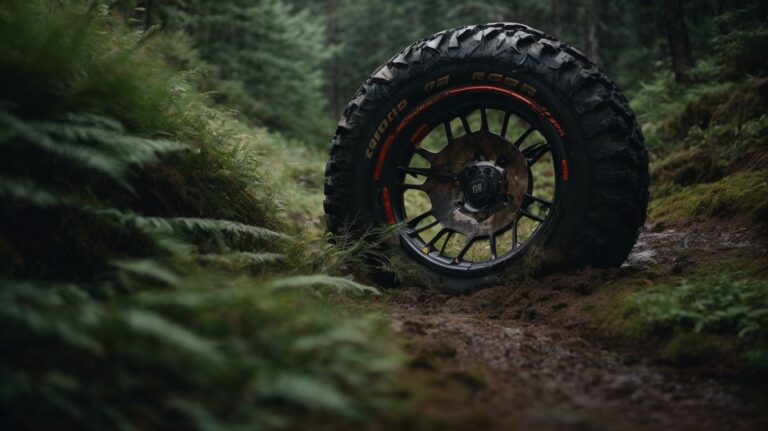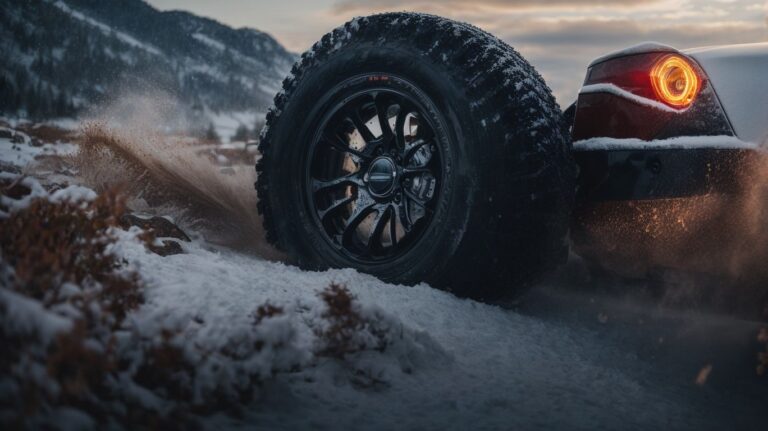Conquer Winter Roads: Best Snow Tires for Maximum Traction
- How To Choose Arctic Claw WXI - January 20, 2024
- How To Choose BFGoodrich Advantage Control All Season - January 20, 2024
- How To Choose BFGoodrich Winter T/A KSI - January 20, 2024
Winter driving can be hazardous on icy and snow-covered roads. To be safe, equip your vehicle with the best snow tires. These tires are designed to provide maximum traction on slippery surfaces. They have unique treads that grip snow, ice, and slush. Plus, the deep grooves help channel away water and reduce hydroplaning. Snow tires are made from special rubber that stays flexible in low temps.
Always install a full set of snow tires on all four wheels. Mixing them with other tires can harm your car’s handling and stability. Note that snow tires don’t guarantee safety on winter roads. Drivers must be extra cautious and adjust driving habits according to conditions.
The history of snow tires dates back to the early 1900s. People used chains on regular tires to gain traction. But this method was hard and caused damage. As tech evolved, manufacturers came up with studded or studless winter tires, transforming winter driving.
Top Snow Tires for Maximum Traction
When it comes to winter driving, having the right tires is a must! To help you conquer slippery roads, here are the top snow tires for maximum traction:
- 1. Michelin X-Ice Xi3 – It’s renowned for its awesome grip on icy surfaces.
- 2. Bridgestone Blizzak WS80 – It’s specially designed with a tread pattern and rubber compound to provide great traction on snow and ice.
- 3. Pirelli Winter Sottozero 3 – It has advanced tech and superior handling to give you outstanding traction and control in cold weather.
What makes these tires so great is their ability to stay grippy even in the worst winter conditions. And to make sure your vehicle is up for the challenge, don’t forget to check your tire pressure regularly during winter months.
Factors to Consider when Choosing Snow Tires
Choosing the right snow tires is a must for safe and confident winter driving. Here are key points to think about:
- Tread Design: Opt for tires with deep treads and larger grooves. They offer better grip on snow and slush.
- Tire Size: Select the correct size, according to your vehicle’s specs.
- Rubber Compound: Look for tires made from a rubber compound designed for cold temperatures. It boosts traction and keeps flexibility in freezing conditions.
- Studs or Studless: Decide which type suits your needs best. Studded tires have awesome grip on icy roads. Studless ones are better for most winter surfaces.
- Speed Rating: Balance the rating with your habits and the region’s weather.
To learn more, check out how brands use advanced techniques like siping (fine grooves cut into the tread).
‘Consumer Reports’ tested different snow tires. Michelin X-Ice Xi3 and Bridgestone Blizzak WS80 were top-rated for ice braking distance and winter performance.
Tips for Installing and Maintaining Snow Tires
Snow tires can provide excellent traction on winter roads. Here’s how to get the most out of them:
- Choose the right size. Refer to your owner’s manual or ask a pro for the correct dimensions.
- Check tire pressure. Cold weather can lower pressure and reduce traction. So keep an eye on it.
- Rotate your tires. Every 5,000-8,000 miles, switch the positions of your tires to ensure even wear.
- Store them properly. Keep them in a cool, dry place away from direct sunlight and extreme temperatures.
Remember, proper maintenance boosts the performance and lifespan of snow tires. And according to Consumer Reports, they can improve braking distances by 25% compared to all-season or summer tires.
Conclusion: Choosing the best snow tires for maximum traction for safe winter driving.
Choosing the right snow tires for maximum traction is key to safe winter driving. Bridgestone Blizzak WS80 is known for its great ice and compact snow performance. Michelin X-Ice Xi3 is a top choice too, providing reliable traction and handling in cold conditions. Continental WinterContact SI is another option, providing excellent traction on ice and responsive handling on wet/dry roads.
To make an informed decision:
- Match your tire size to your vehicle’s specs for optimal performance.
- Dedicated winter tires are better than all-season tires for winter conditions.
- Check tire pressure regularly, monitoring tread wear.
- Store winter tires properly during warm months.
Frequently Asked Questions
1. Are snow tires necessary for winter driving?
Yes, snow tires are highly recommended for driving in snowy and icy conditions. They provide better traction, handling, and braking capabilities, reducing the risk of accidents.
2. What makes a snow tire different from a regular tire?
Snow tires are specifically designed with unique tread patterns, softer rubber compounds, and deeper grooves to provide better traction on snowy and icy surfaces. They are more flexible in cold temperatures, ensuring optimal grip in winter conditions.
3. Are all-season tires suitable for winter driving?
While all-season tires are designed to perform well in a variety of conditions, including light snow, they are not as effective as dedicated snow tires in severe winter conditions. All-season tires do not have the same level of grip and traction on icy or slushy roads.
4. How often should I replace my snow tires?
The tread depth of snow tires should be regularly checked, and they should be replaced when the depth reaches around 6/32 inches. The average lifespan of snow tires is typically around 4-6 seasons, depending on usage and maintenance.
5. Can I use only two snow tires instead of a full set?
While using only two snow tires may provide some improvement in traction, it is highly recommended to use a full set of four snow tires for maximum safety and performance. Mixing snow tires with regular tires can negatively affect handling and stability.
6. Should I consider studded snow tires?
Studded snow tires can provide excellent grip on icy roads; however, they are also louder and can damage road surfaces. Studded tire regulations vary by state, so it’s important to check local laws and consider the trade-offs before choosing studded tires.






